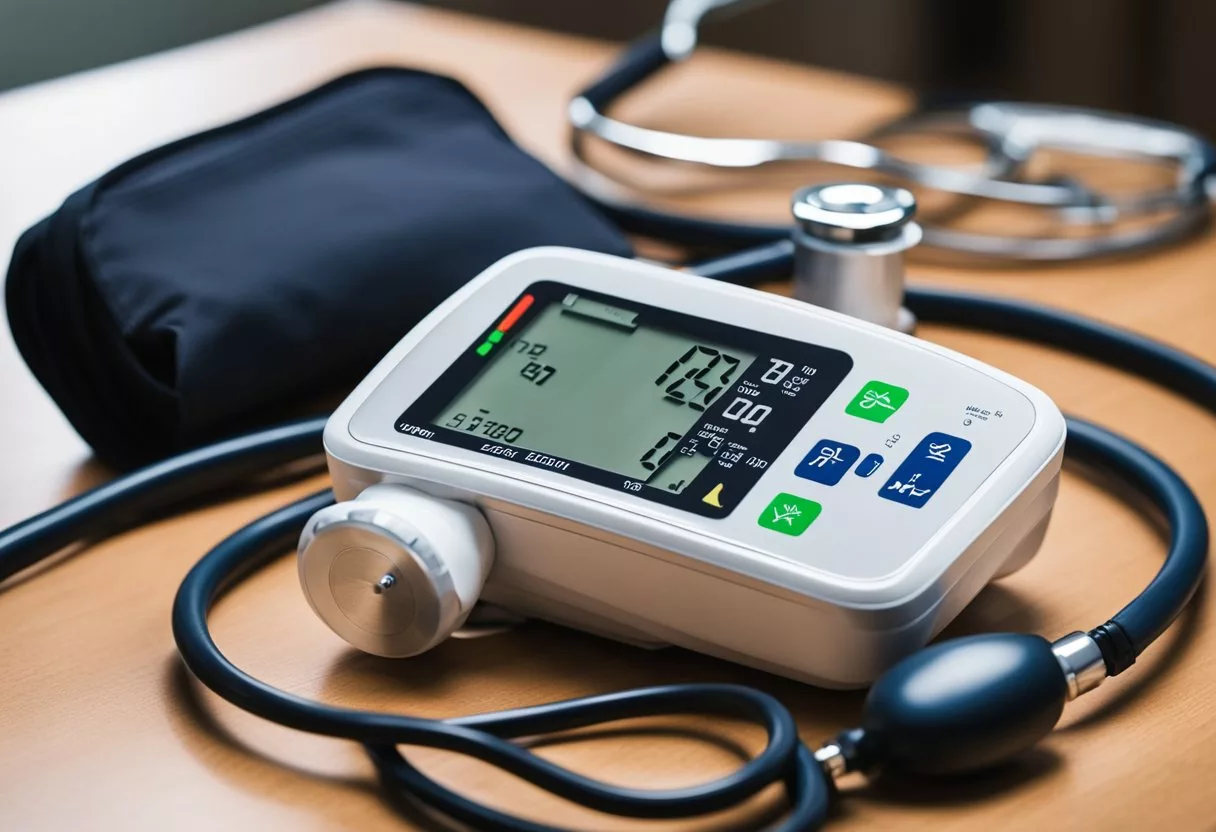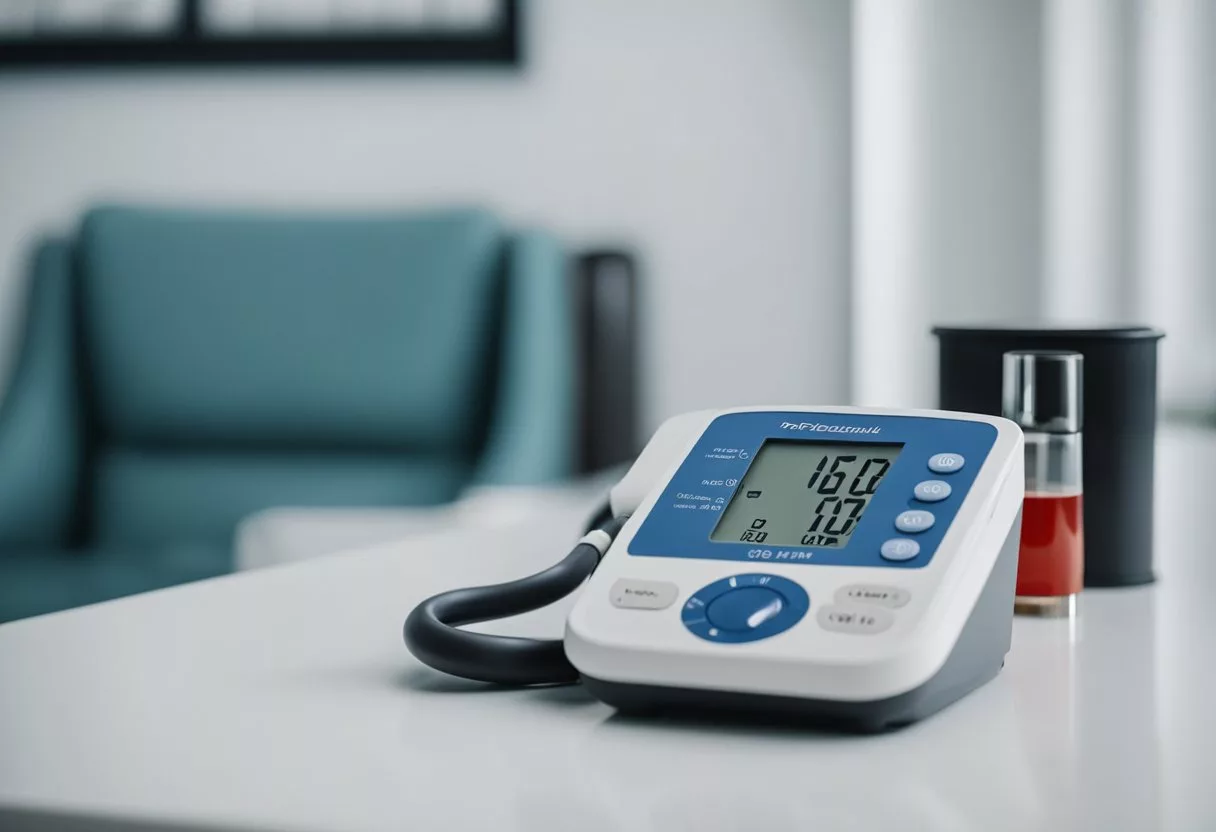Blood pressure is a key measure of heart and cardiovascular health in general. It shows how hard your heart works to pump blood through your body. The ideal blood pressure range helps your heart and blood vessels stay healthy without putting too much stress on them.

Normal blood pressure ranges have changed with time. Guidelines incorporate new significant research findings, so they adapt to them. Currently, a normal blood pressure reading is below 120/80 mm Hg. The top number (120) is the systolic blood pressure (SBP) when your heart beats. The bottom number (80) is the diastolic blood pressure (DBP) between beats. Readings from 120-129 systolic and less than 80 diastolic are considered elevated. High blood pressure, or hypertension, starts at 130/80 mm Hg or higher.
Keeping blood pressure in a healthy range lowers the risk of heart disease, stroke, and kidney problems. Many factors affect blood pressure, like diet, exercise, stress, and genetics. Regular checks help catch issues early. With proper care, most people can reach and maintain an ideal blood pressure over time.
Blood Pressure: Definition and Importance

As we mentioned before, blood pressure is a key measure of heart health. It shows how hard the heart works to pump blood through the body. Knowing your blood pressure can help prevent serious health issues.
Definition and Importance
Blood pressure is the force of blood pushing against the artery walls as the heart pumps. It’s measured in millimeters of mercury (mm Hg). Normal blood pressure helps oxygen and nutrients reach all organs and tissues.
However, high blood pressure can damage blood vessels over time. This may lead to heart disease, stroke, or chronic kidney disease. Low blood pressure, on the other hand, can cause dizziness and fainting.
And this is why regular blood pressure checks are important. They can catch problems early, before symptoms appear.
Systolic and Diastolic Explained
Blood pressure has two numbers:
- Systolic pressure: The top number
- Diastolic pressure: The bottom number
Systolic pressure happens when the heart beats. It measures the force on artery walls during a heartbeat.
Diastolic pressure occurs between beats. It shows the pressure when the heart rests.
A reading of 120/80 mm Hg means:
- Systolic pressure: 120 mm Hg
- Diastolic pressure: 80 mm Hg
Blood Pressure Readings
Blood pressure falls into different categories, which can inform us about the risk they carry:
| Category | Systolic (mm Hg) | Diastolic (mm Hg) |
|---|---|---|
| Normal | Less than 120 | Less than 80 |
| Elevated | 120-129 | Less than 80 |
| High Blood Pressure (Stage 1) | 130-139 | 80-89 |
| High Blood Pressure (Stage 2) | 140 or higher | 90 or higher |
Normal blood pressure is below 120/80 mm Hg. Anything above this may need attention.
A doctor can explain your readings. They’ll consider your age, sex, and overall health.
Regular monitoring helps track changes over time. Home blood pressure monitors are useful for this.
Factors Influencing Blood Pressure
Many things can affect blood pressure:
- Age: Blood pressure often rises with age
- Sex: Men tend to have higher blood pressure than women
- Race and ethnicity: Some groups have higher risks
- Lifestyle: Diet, exercise, and stress play a role
Other factors include:
- Smoking
- Salt intake
- Alcohol use
- Weight
- Genetics
Some of these you can control. Others you can’t. Making healthy choices can help keep blood pressure in check.
Regular exercise and a balanced diet are proven methods of prevention. Limiting salt and alcohol can also help. Managing stress through relaxation techniques is useful too.
Blood Pressure Ranges
Blood pressure ranges help doctors assess heart health. Different levels indicate optimal, normal, elevated, or high blood pressure. Understanding these ranges can guide treatment decisions.
Optimal and Normal Ranges
A normal blood pressure is below 120/80 mmHg. The top number (systolic) measures pressure when the heart beats. The bottom number (diastolic) measures pressure between beats.
Optimal blood pressure is less than 120/80 mmHg. This range is linked to lower risks of heart disease and stroke.
Normal blood pressure falls between 120-129/80-84 mmHg. People in this range should maintain a healthy lifestyle to prevent future issues.
Elevated and High Blood Pressure
Elevated blood pressure ranges from 130-139/85-89 mmHg. This is also called “prehypertension.” It signals an increased risk of developing high blood pressure.
High blood pressure, or hypertension, starts at 140/90 mmHg. It’s divided into two stages:
- Stage 1: 140-159/90-99 mmHg
- Stage 2: 160/100 mmHg or higher
Low Blood Pressure
Low blood pressure, or hypotension, is typically below 90/60 mmHg. It can cause dizziness, fainting, and fatigue.
Some people naturally have low blood pressure without symptoms. In those cases, this isn’t usually a matter of concern, because individuals are used to their blood pressure levels.
Low blood pressure can be a sign of other health issues. It may require medical attention if it causes symptoms or drops suddenly.
Blood pressure can vary throughout the day. Multiple readings over time give the most accurate picture of a person’s blood pressure status. In some cases, this type of monitoring is indicated (holter).
Health Risks and Complications

Risk Factors for Hypertension
High-normal blood pressure is an early sign of increased cardiovascular risk. Age plays a role, with risk rising as people get older. Being overweight strains the heart and blood vessels.
Unhealthy habits contribute to hypertension. Too much alcohol raises blood pressure. Diets high in saturated fat and sugar are harmful. Not exercising enough is also risky.
Some factors can’t be changed. Family history affects blood pressure. Certain health conditions make hypertension more likely.
Consequences of Uncontrolled Blood Pressure
Uncontrolled hypertension damages the body. It forces the heart to work harder, leading to heart failure. The risk of heart attacks goes up.
Strokes become more common with high blood pressure. Blood vessels in the brain can burst or become blocked.
Kidneys suffer from hypertension. They may fail to filter blood properly. This can cause kidney disease.
Eye damage is another risk. High pressure can harm blood vessels in the eyes.
Cardiovascular diseases increase with hypertension. Blood vessels narrow and harden. This affects blood flow to vital organs.
In extreme cases, a hypertensive crisis can occur. This is a medical emergency requiring immediate care.
Management and Treatment
Getting blood pressure under control involves a mix of lifestyle changes and medical care. The right approach depends on each person’s needs and health status.
Lifestyle Changes
Controlling blood pressure often starts with daily habits. A healthy diet low in salt can make a big difference. Eating more fruits, vegetables, and whole grains helps too.
Regular exercise is key. Even 30 minutes of walking most days can lower blood pressure. Quitting smoking and cutting back on alcohol are also important steps.
Stress management techniques like deep breathing or meditation can help. Getting enough sleep each night is crucial for heart health.
Staying hydrated by drinking water throughout the day supports healthy blood pressure. Small changes add up to make a big impact over time.
Medications and Therapies
When lifestyle changes aren’t enough, doctors may prescribe blood pressure medications. Common types include:
- ACE inhibitors
- Angiotensin II receptor blockers (ARBs)
- Calcium channel blockers
- Diuretics
These work in different ways to lower blood pressure. Some relax blood vessels, while others remove excess fluid from the body.
Doctors choose treatments based on each patient’s needs. They consider factors like age, other health conditions, and potential side effects.
It’s important to take medications as prescribed. Patients should talk to their doctor about any side effects or concerns.
Monitoring and Home Care
Regular blood pressure checks are vital for managing hypertension. Many people use home blood pressure monitors with an inflatable cuff and pressure gauge.
Self-monitoring helps track progress and catch any changes quickly. It’s best to check at the same time each day for consistent readings.
Keeping a log of readings helps doctors adjust treatment plans. Some digital monitors can even send data directly to healthcare providers.
Although patients can use self-monitoring, it’s still important to have regular check-ups with your doctor. They can do more detailed tests and adjust medications as needed.
Preventive Measures

Keeping blood pressure in check requires a mix of lifestyle choices and regular monitoring. The following steps can make a big difference in your overall cardiovascular and, in particular, heart health.
Dietary Considerations
A heart-healthy diet is key for ideal blood pressure. Eat more fruits, veggies, and whole grains. These foods are rich in potassium, which helps lower blood pressure.
Cut back on salt. Too much sodium makes your body hold onto water, raising blood pressure. Guidelines recommend limiting dietary sodium intake to manage blood pressure. Aiming for sodium intakes of 2-3 g/day in the general population and as low as 2 g/day in persons with hypertension or cardiovascular disease is considered reasonable, though there is some uncertainty around lower targets.
Limit sugar and unhealthy fats. Trans fats and saturated fats can clog arteries. Choose lean proteins and healthy fats from nuts and fish instead.
Try the DASH diet. It’s made to fight high blood pressure. DASH stands for Dietary Approaches to Stop Hypertension.
Regular Physical Activity
Exercise makes your heart stronger. A stronger heart pumps blood with less effort, lowering pressure on artery walls.
Aim for at least 150 minutes of moderate exercise each week. This could be:
- Brisk walking
- Swimming
- Cycling
- Dancing
Even small amounts help. Take the stairs or park farther away for extra steps.
Make it fun. Find activities you enjoy. This makes it easier to stick to your routine.
Routine Health Checks
Regular blood pressure screenings cannot be emphasized enough. They catch issues early before damage occurs.
Get checked at least once a year. If you have risk factors, you may need more frequent tests.
Use proper technique for home readings:
- Sit quietly for 5 minutes first
- Don’t smoke, drink caffeine, or exercise 30 minutes before
- Empty your bladder
- Support your arm at heart level
Take multiple readings and record the results. This gives a more accurate picture over time.
Talk to your doctor about your numbers. They can help you set goals and adjust your plan as needed.
Understanding Blood Pressure Guidelines

Blood pressure guidelines help doctors and patients make sense of blood pressure readings. These guidelines set standards for what’s considered normal, high, and low blood pressure.
National and International Guidelines
The American Heart Association and other health organizations create blood pressure guidelines. These guidelines change as new research comes out.
Recent updates have lowered the threshold for high blood pressure. Now, a reading of 130/80 mmHg or higher is considered high.
Different countries may have slightly different guidelines. But most agree on the general ranges for normal and high blood pressure.
Doctors use these guidelines as a starting point. They also look at a patient’s overall health when making decisions about treatment.
Interpreting Blood Pressure Charts
Blood pressure charts help people understand their readings. These charts show different ranges for normal, high, and low blood pressure.
A typical chart includes these categories:
- Normal: Less than 120/80 mmHg
- Elevated: 120-129/less than 80 mmHg
- High Blood Pressure Stage 1: 130-139/80-89 mmHg
- High Blood Pressure Stage 2: 140/90 mmHg or higher
Systolic pressure (the top number) is often given more weight in these charts. It’s seen as a stronger predictor of heart disease risk.
Age and gender can affect what’s considered normal. For example, older adults may have slightly higher normal ranges.
Blood Pressure and Gender

Blood pressure levels can differ between men and women. These differences are influenced by various factors like hormones and body composition.
Differences in Men and Women
Blood pressure tends to be higher in men compared to women, especially before menopause. This gap narrows after women reach menopause. Hormones play a key role in this difference.
Estrogens in women help protecting blood vessels and regulate blood pressure. Testosterone in men, on the other hand, can increase blood pressure levels. These hormonal effects contribute to the gender gap in blood pressure readings.
Women typically have lower systolic blood pressure until about age 60. After that, their systolic pressure rises more steeply than men’s. This change is linked to menopause and declining estrogen levels.
Gender differences in blood pressure control mechanisms also exist. Men and women may respond differently to stress and various blood pressure medications.
Body composition affects blood pressure too. Men often have more muscle mass, which can influence blood pressure readings. Women tend to have higher body fat percentages, which can impact blood pressure differently.
The risk of cardiovascular disease (CVD) increases from a lower nadir of SBP in women than men, and increases thereafter at a greater rate. However, CVD risks are higher in men than women at all blood pressure levels, and the lowest risks are at slightly different SBP levels for men and women (100-<105 mmHg for women and 110-<115 mmHg for men).
Frequently Asked Questions
Blood pressure has different normal ranges based on age and gender. There are health risks linked to high and low blood pressure. Knowing when to seek medical help is key.
What are the normal blood pressure ranges for different ages?
Blood pressure tends to rise with age. For adults, normal blood pressure is below 120/80 mm Hg. In children and teens, normal ranges are lower.
For those over 60, doctors may allow slightly higher readings. A person’s doctor can provide specific target ranges based on their health.
How does blood pressure vary with gender?
Men often have higher blood pressure than women until about age 60-65. After menopause, women’s blood pressure may increase.
These differences can affect how doctors diagnose and treat high blood pressure in men and women.
What are the risks associated with high blood pressure?
High blood pressure can damage blood vessels and organs. It raises the risk of heart disease, stroke, and kidney problems.
Even small increases in blood pressure can be harmful. Each 10 mm Hg rise above normal increases heart disease risk by 17%.
What are the signs of low blood pressure and when is it considered dangerous?
Low blood pressure signs include dizziness, fainting, and fatigue. It becomes dangerous when it causes symptoms or organ damage.
Very low pressure can reduce blood flow to the brain and other organs. This may lead to shock, a life-threatening condition.
How can one effectively lower their blood pressure?
Regular exercise can lower blood pressure. Aerobic activity a few times per week helps reduce both systolic and diastolic pressure.
A healthy diet low in salt and high in fruits and vegetables also helps. Limiting alcohol and not smoking are important steps too.
At what point does blood pressure reach a level of medical emergency?
A blood pressure reading above 180/120 mm Hg is a hypertensive crisis. This requires immediate medical attention.
Other symptoms like chest pain, shortness of breath, or vision changes with high blood pressure also need urgent care.